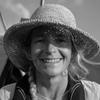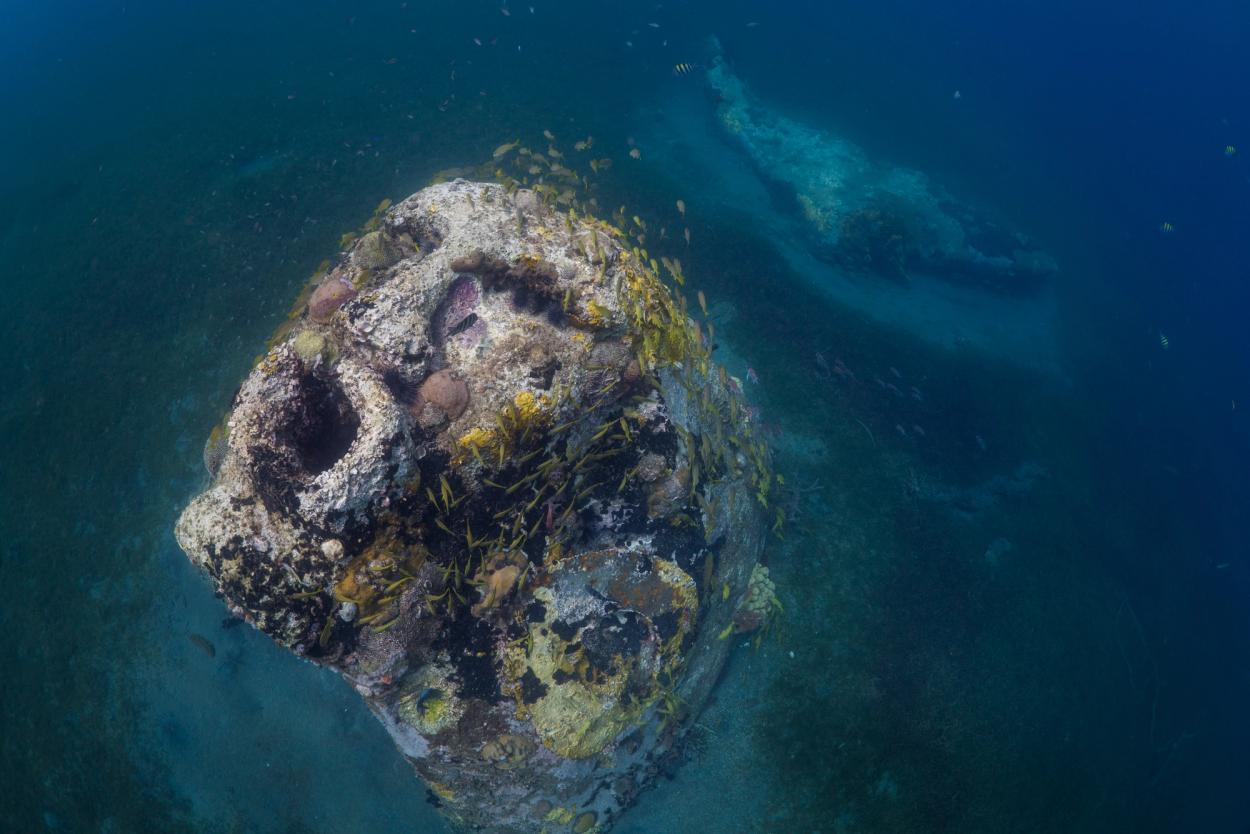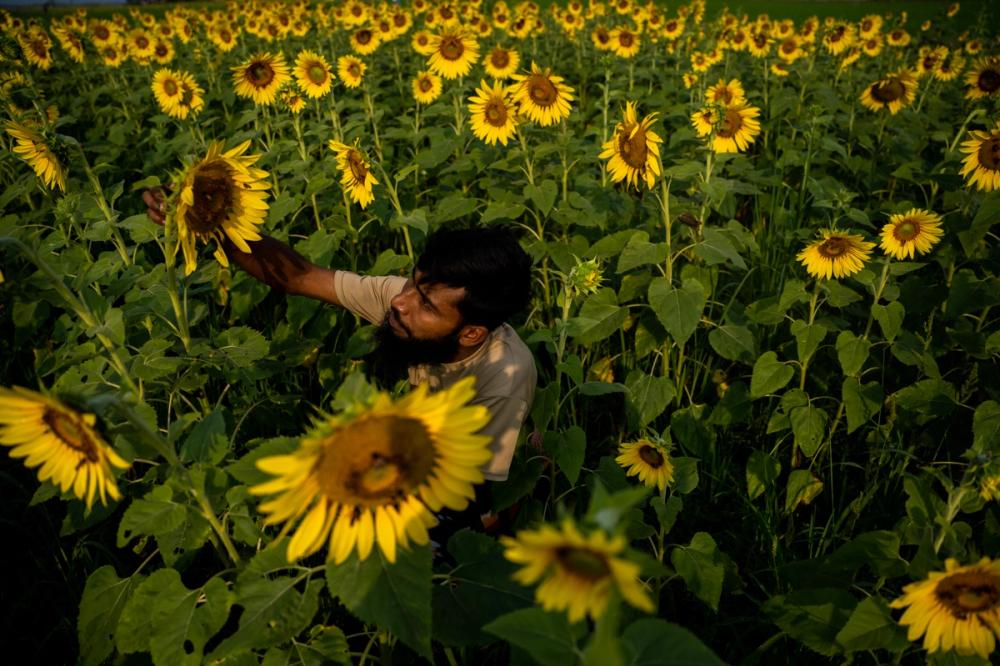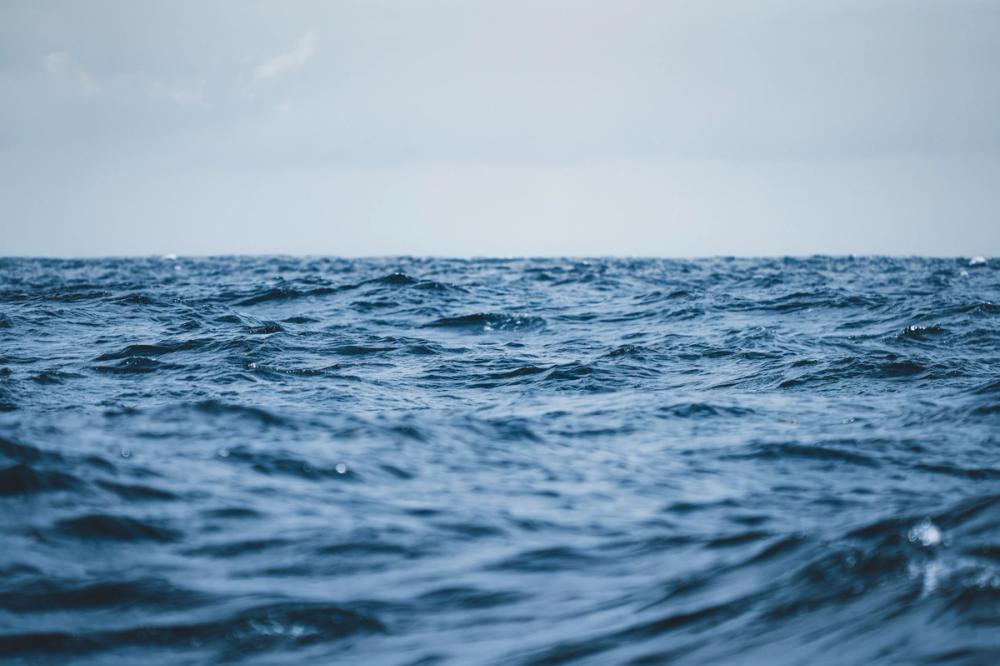Maerl
The ancient climate hero nobody's heard of
Hidden from view, maerl beds are largely unmapped and vulnerable to commercial fishing practices that can be enormously damaging. Their value as ecosystem engineers, nursery grounds and carbon sinks is slowly being recognised prompting urgent appeals for their protection equal to other marine habitats- 30% of known maerl beds set aside in Marine Protected Areas by 2030.
26 February 2025
We arrive at the loch side as the heavens open for the third time that day. But the rain is not a problem for what we’re about to do. “It never rains underwater!” Saz exclaims. Before us is Loch Leven with a backdrop of west Scotland’s highest peaks. Underwater, growing in a tide swept channel between the shore and a small island, is a unique and ancient habitat that few people have heard of, and the reason Saz has brought me to this precise spot. Having driven 300 miles to get here, I’m excited to see it for myself, a magical bed of pink seaweed that might be headed towards extinction.

Marine scientist Saz Reed shows me the maerl bed at Loch Leven, Scotland. Here, northern maerl grows as a veneer around pieces of gravel and shells, a form termed encrusting. Over time, the layers thicken, transforming the underlying anchor from a grey piece of gravel or ageing shell into a glorious sea sculpture, each utterly unique.
Swimming out from the shore we quickly reach the channel, “I think it's here, I’ll go down and check.” I wait at the surface as Saz hinges at the waist and dives. With a few kicks she’s already at bottom, the water is only a few metres deep. Rolling over she turns to look up at me and celebrates with a whole body gesture, arms and legs waggling in unison. Rising to the surface she emerges laughing “The maerl, we found it!”
Beneath us, what looks like grey, colourless gravel from above becomes a rose-tinted candyland up-close. Knobbly twigs and branches, spikey balls and half-tangerine sized dishes carpet the seabed in loose piles. Among them are empty shells, bright starfish, tube worms, sea snails, gobies that dart off leaving a cloud of silt in their wake and the odd feisty crab that rises up on its legs with brandished claws when I get too close. It’s a miniature wonderland full of life and I feel a wave of awe rising in me for maerl.
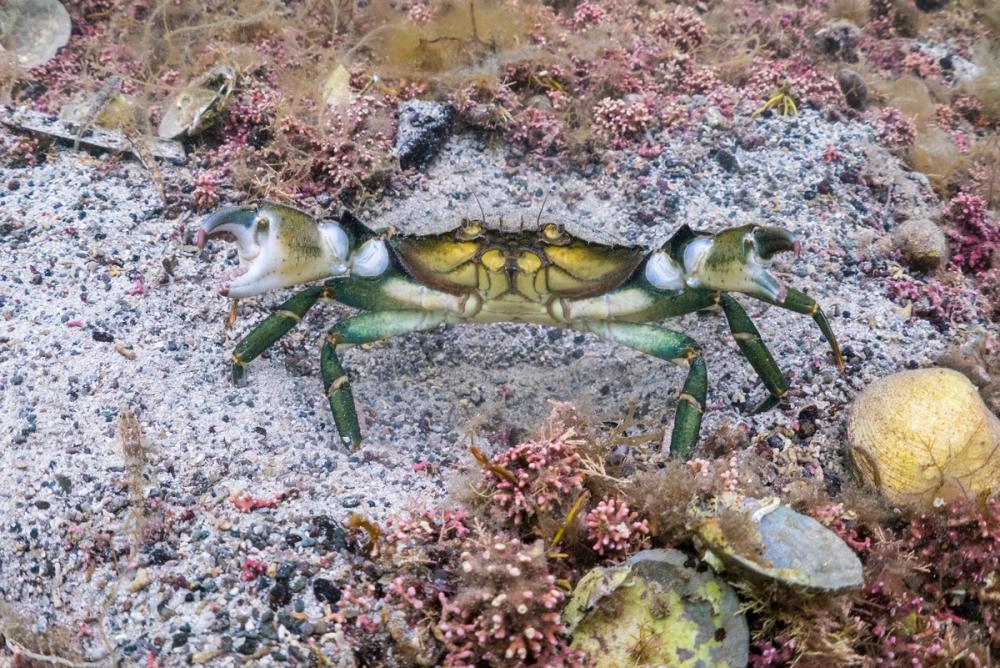
A feisty common shore crab (Carcinus maenus) at home on a maerl bed, Loch Leven, Scotland. These crabs eat a varied menu of animal and plant material using their claws to snip at seaweeds or crush the shells of juvenile queen scallops (Aequipecten opercularis) and common periwinkles (Littornina littorea) to get at the flesh. The role of maerl beds as nursery grounds means the snacks on offer suit the small size of the crab's claws.
So what is maerl?
Maerl is a generic term used to describe unattached red seaweeds with a hard calcium carbonate skeleton, or coralline algae. They are also known as rhodoliths, meaning red stone. Growing as loose stony structures, they form banks of living gravel that may heap into undulating peaks and troughs like waves on the ocean surface. The resulting bed is a complex three-dimensional structure that provides a sanctuary for a huge variety of animals and other seaweeds living attached to the branches, in the spaces between, or burrowing in the coarse gravel of dead maerl beneath (Hall-Spencer et al., 2010).
This ability to change their surroundings and create new habitat and resources for other life places maerl alongside beavers, wolves and kelp as powerful ecosystem engineers. Valued for their particularly high biodiversity including rare and unusual species, maerl beds also provide a nursery for commercially important ones, like juvenile edible crab, cod and scallop.
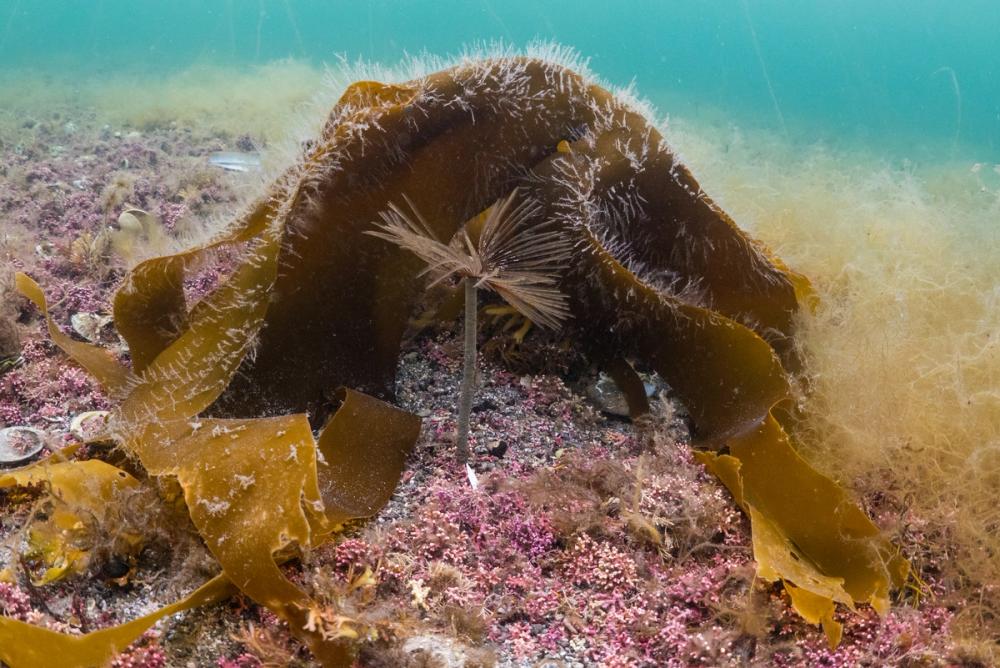
Peacock worms (Sabella pavonina) live in long tubes anchored to fragments of maerl or gravel within the bed. They feed by extending a plume of feather-like tentacles into the water current that filter out small particles. Each particle is sorted according to size, large ones are rejected and carried away in the flow, medium ones are used for tube building and maintenance and small ones are just right for eating.
Adding to its allure, maerl is long lived and slow growing. Individual fragments of maerl species grow at an average rate of 0.4 mm per year and have a lifespan of up to 100 years (Jardim et al., 2022). This living maerl forms a top layer above piles of dead maerl skeletons that can be thousands of years old. Out of sight beneath the waves, each maerl fragment stores carbon within its cell walls, as a stony secretion of calcium carbonate. Secretly locking away huge amounts of carbon, these ancient beds are the climate change heroes nobody’s heard of.
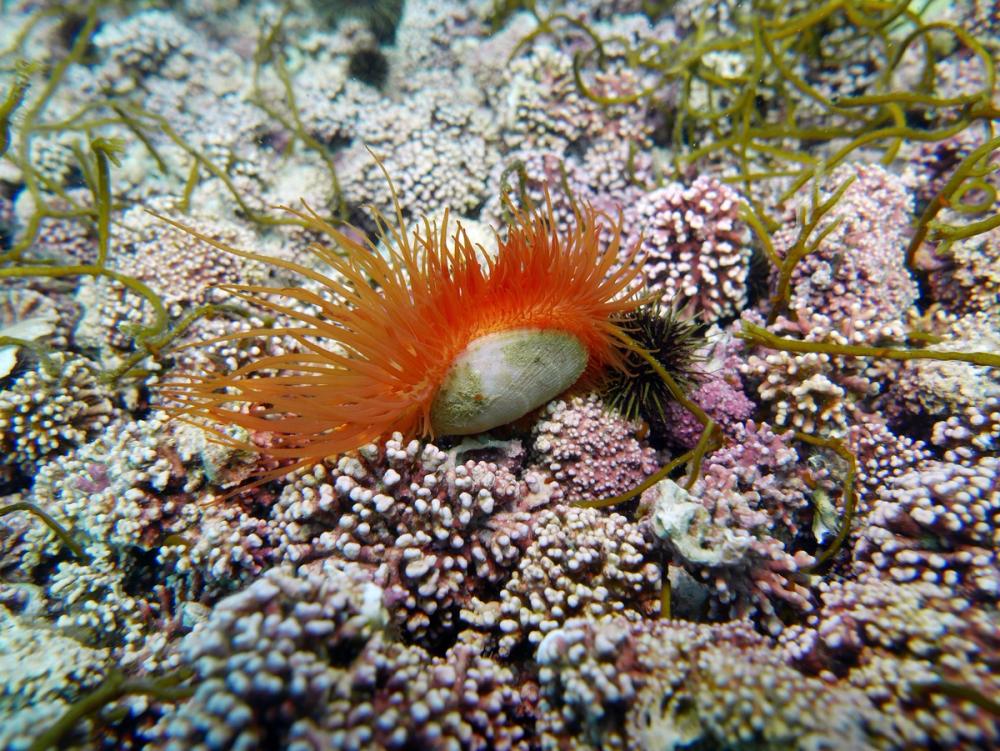
Maerl provides habitat for the flame shell (Limaria hians), a rare clam species that build nests by binding together pieces of gravel, shell and maerl. Where conditions are right they form carpets which, like maerl beds, create habitat for other species. In Scotland, where the importance and wonder of flame shell beds are recognised they are protected as a priority marine feature. ©Eli Rinde, NIVA
Where is maerl found?
Maerl is found from the poles to the tropics and can form extensive beds where conditions are right. They are particularly well developed in the Mediterranean Sea, where they are estimated to cover more than 2700 square kilometres (Philips, 2023). Like other seaweeds, maerl makes food using light via photosynthesis. For this reason it favours clear, clean seawater and sufficient tidal flow and wave action to remove fine sediments that would otherwise smother it. Depth-wise, the clearer the water, the deeper it can grow. The maerl bed we visited in Loch Leven in Scotland was covered by just a few metres of water, whilst a rhodolith bed recently discovered off the coast of South Africa was found to be thriving at a depth of 65 metres (Adams et al., 2020).
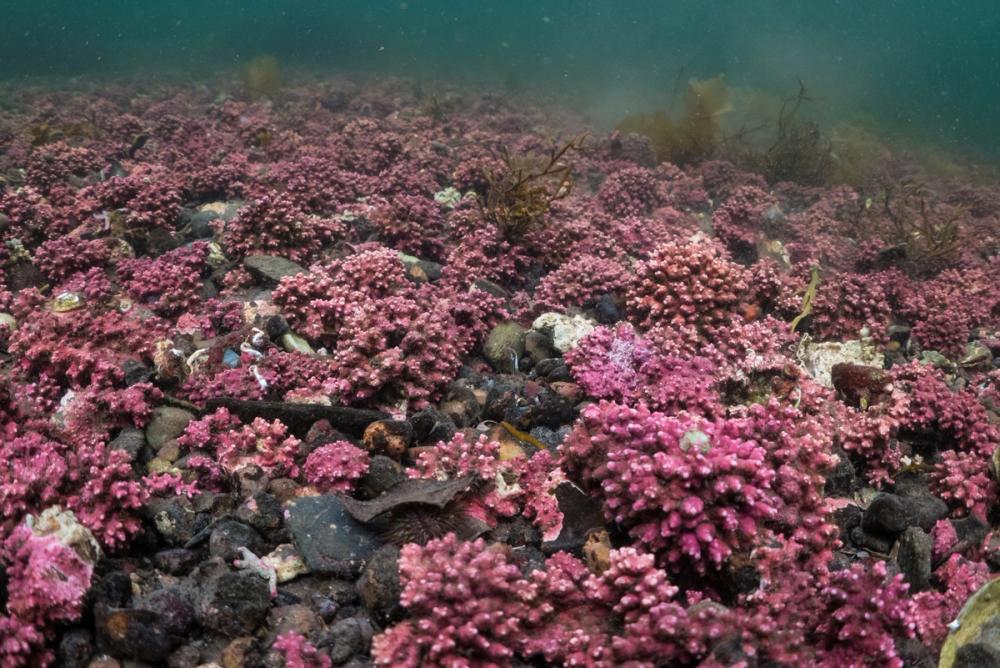
Maerl is a little-known, stony red seaweed that grows as loose, interlocking fragments on the seabed. Its shape ranges from irregular twig-like branches to flattened medallions and orange-sized spiky balls. Several maerl species occur worldwide and the foundation species of maerl beds varies geographically. The northern maerl (Lithothamnion glaciale) is pictured here, commonly found in Scottish sea lochs.
Our knowledge of exactly where maerl beds are found is pretty limited and historically has been confined to where they have commercial value. Mapping is patchy throughout its entire range and the main message I have picked up from the science community is that maerl has been overlooked for a long time. We simply don’t know where it is despite its recognised conservation importance. And this is one of its biggest threats—if we don’t know where it is how can we protect it?
What are the threats?
Maerl’s habit of growing in loose piles makes it vulnerable to physical disturbance. Scallop dredging for example is particularly harmful. This method of fishing for scallops involves dragging a heavy, spiked metal frame along the seabed that flips scallops out of the sand into a chain mail net. Everything in its path is mowed down by the frame or captured by the net. The aftermath is a barren wasteland akin to a clear felled forest. Beam trawling for bottom-dwelling fish and shrimp has a similar effect on the seabed and studies have shown that both methods cause lethal damage to maerl beds. Any recovery would require a fallow period of decades to hundreds of years, due to their slow growth rate (Welsh Government report, 2020).
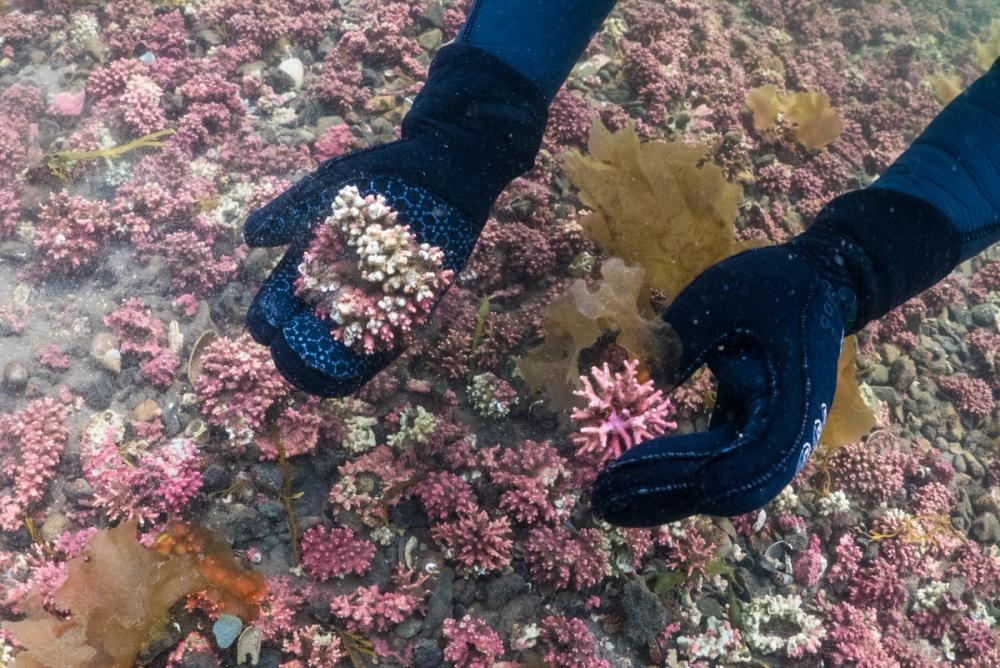
When under stress maerl bleaches white and dies, much like tropical corals. Stressors include high levels of UV light, smothering by sediment, low salinity, pollution from aquaculture, poor water quality and ocean acidification. The cause of bleaching in this photo was unknown. Its location suggests it could be caused by any or a combination of all these factors.
Commercial harvesting of maerl has taken place for many years, and is dried, ground and sold as a calcium carbonate-rich dressing for soil. The extraction method causes huge amounts of physical disturbance and creates plumes of silt in the water that smother remaining maerl beds. In the past, maerl beds of the Fal estuary and Helford river areas of Cornwall, England were intensively harvested. Between 1975 and 1991 up to 30,000 tonnes of maerl were removed per year from the Fal estuary. Since then it has been recognised as an unsustainable practise from which the maerl bed can never recover, and was banned in 2005 with the designation of the Fal and Helford Special Area of Conservation (Natural England, 2024).
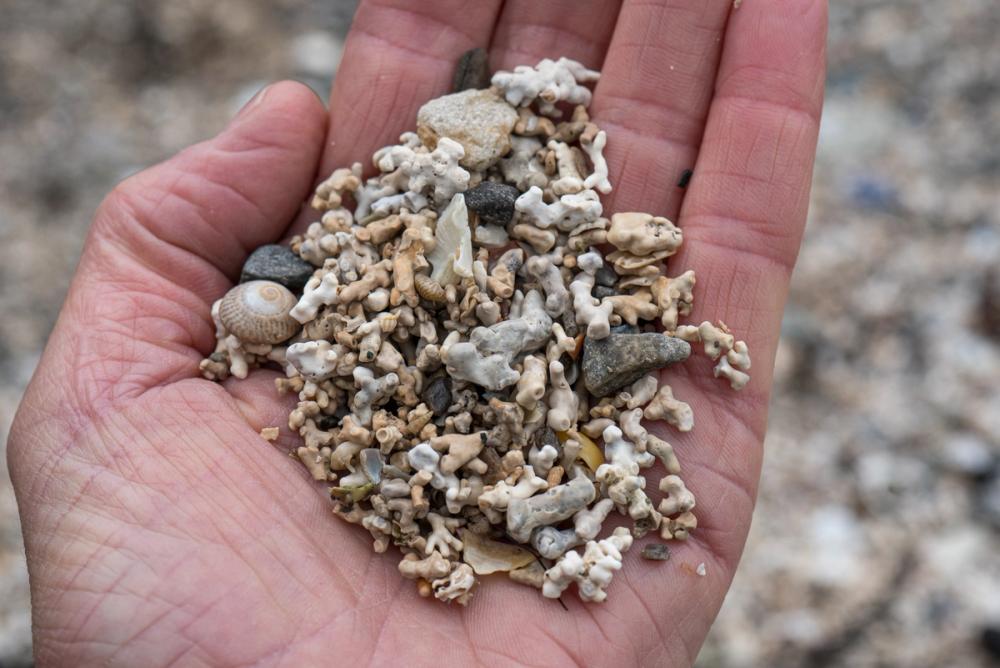
The dead skeletons of maerl are made of calcium carbonate and look like broken pieces of coral. Previously it was harvested commercially throughout Europe for use as agricultural soil conditioner, animal food additives and water filtration systems. Due to the very slow rate of growth, maerl is considered to be a non-renewable resource. Extraction has now ceased but many maerl beds may never recover.
Maerl harvesting is no longer allowed in most European countries but for many maerl beds the damage is irreversible. In Brittany where most of the northeast Atlantic maerl beds are concentrated, huge swathes have been lost after centuries of intensive harvesting (Hall-Spencer et al., 2010 and Jardim et al., 2022). Other threats include boat moorings and anchoring, ocean acidification, siltation, poor water quality, eutrophication, climate change and aquaculture. Salmon farms in northern Norway and mussel farms in Galicia, Spain have both had a huge effect on the quality and extent of maerl beds in those regions. Associated with aquaculture is the introduction of non-native species that overgrow or change the biodiversity of the maerl beds.

Intensive mussel farming is one of the main threats to maerl beds in Galicia, Spain where a serious reduction in maerl cover and extent has been detected. Mussel aquaculture started there in the 1940s, reaching approximately 3400 mussel rafts by 2000 (Hall-Spencer, 2010). Mussel faeces rain down onto the living maerl, smothering it and blocking out light for photosynthesis and reducing the structural complexity of the maerl bed. It spells death not only for the maerl but for the many other species it supports.
Currently, maerl beds are listed as “vulnerable” or “endangered” on the IUCN Red List and in Europe they are protected under the EU Habitats Directive and the OSPAR Commission in the North Atlantic. These are supported by local designations in Marine Protected Areas (MPAs), such as in Scotland which is a European stronghold for maerl habitat. Here it is protected as a Priority Marine Feature in eleven MPAs (Hall-Spencer et al., 2020). When I showed Eli Rinde, senior research scientist at the Norwegian Institute of Water Research (NIVA) images from a maerl bed I freedived in one of these MPAs she looked gloomy. “You can see overgrowth by filamentous algae. In some places it is sparse but where it is dense the maerl beneath will not receive sufficient light and will die.” What she saw is likely to be the result of water quality issues, high levels of nutrients fertilising prolific growth of filamentous algae.

Maerl bed overgrowth by filamentous algae and brown seaweeds may indicate a high nutrient load in the water from aquaculture waste or land-based runoff from heavy rainfall. By shading out the light for photosynthesis this overgrowth will eventually kill the maerl. With death comes a deterioration in the structural framework that supports other life and biodiversity plummets.
On the shore at this spot, dead maerl has created a striking, natural ‘coral beach’ that visitors make a special journey to see. Rinde tells me these beaches are a much-loved feature of northern Norway too but may become a thing of the past as ocean acidification from climate change dissolves the calcium carbonate skeletons. In the ocean the boundaries of a Marine Protected Area may be drawn on a map and preclude a list of activities that are physically damaging to maerl. But there are no barriers to prevent water-borne pollutants from sweeping through as an unseen wave of destruction.
Years ago, I was part of a four person team monitoring a doomed maerl bed in the Milford Haven Waterway. This is the only known living maerl bed in Wales and is confined to an area just 1 kilometre long by half a kilometre wide that sits between the South Hook Liquified Natural Gas (LNG) jetty access trestle and Stack Rock Fort. Already struggling from high levels of silt coming down the waterway and invasion by the slipper limpet (Crepidula fornicata), a non-native shellfish, life got much harder when the jetty underwent refurbishment in anticipation of increased LNG tanker traffic. Being fragile and sensitive to disturbance, burial and overturning by turbulence, the combined construction and boat activity added to the strain.
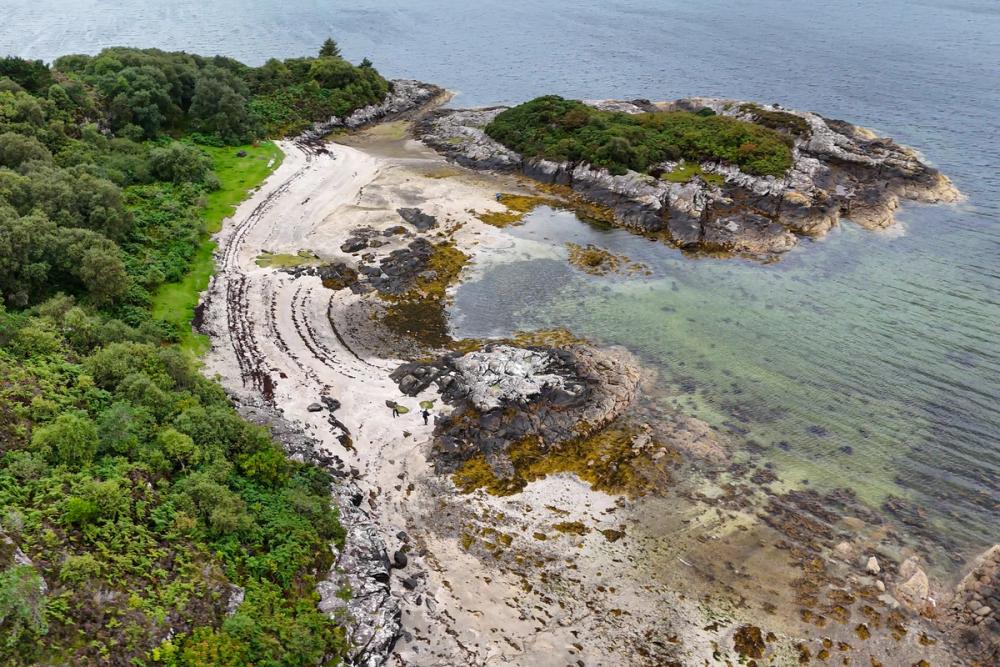
One-third of all the maerl in northwest Europe is found in the west of Scotland. Here many of the white beaches are made of dead maerl and may be thousands of years old. Growing evidence shows that higher latitude regions are worst affected by ocean acidification. The beautiful white beaches of northern Norway may become a thing of the past as the increasingly acidic ocean dissolves them away and they vanish in plain sight.
Francis Bunker, marine monitoring specialist from Aquatic Surveys and Monitoring Limited who has been contracted to survey the maerl bed since 2004, (Natural Resources Wales report, 2010) repeated the surveys in 2016 and 2023. His results showed a decrease in the percentage of life since the construction work in 2005 and heavy siltation, despite scallop dredging being banned in the area since 2010. But this maerl bed has been around long before any human activity began and even knew it existed. According to Francis, “Deposits of fossilised maerl from Stack Rocks have been carbon dated to the last ice age." That’s around 15,000 years. Yet I can’t help wondering how much longer they will be around. “The maerl is degraded and any recovery is going to take a long time as it grows so slowly. But it’s still hanging in there.”
Hope for maerl
Like undulations in the maerl beds themselves, reports of maerl health and abundance mirror these peaks and troughs. Many have disappeared or are struggling like so many other species and habitats in the ocean. One study predicts a not-so-rosy future for maerl globally under the predicted climate change (Simon-Nutbrown et al., 2020). Unless more effort is made to map where it is, it may disappear before we know it's there. On a regional level some progress is being made; surveys off the south coast of Cornwall, England this summer discovered a previously unmapped rich and abundant “underwater Barbieland”. Thriving maerl beds of captivating beauty were recorded, where not only small creatures abounded but larger marine creatures too such as cuttlefish, rays and catsharks.
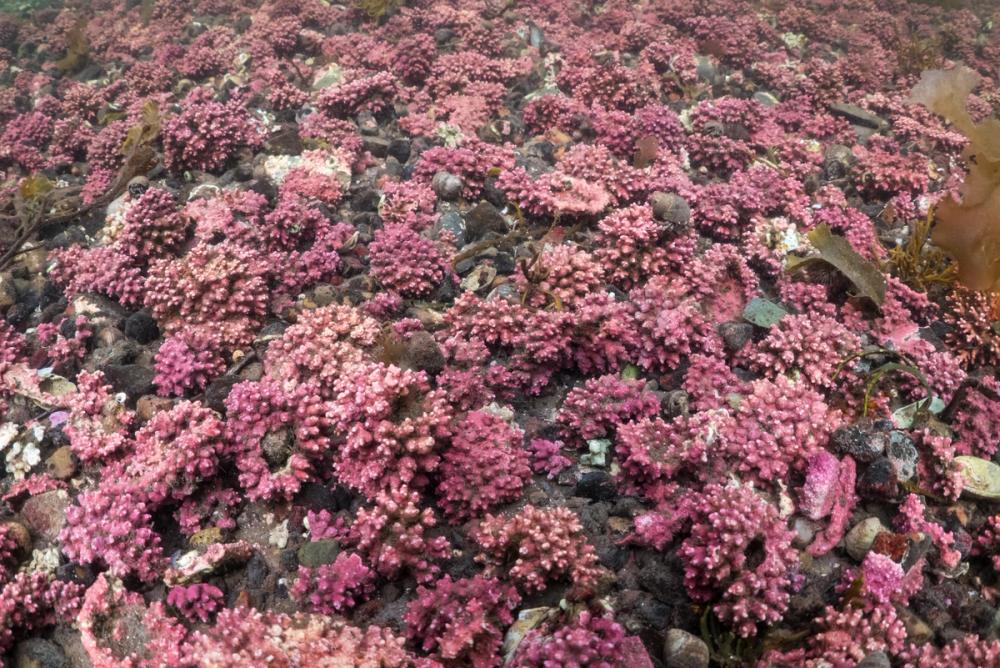
Hidden from view, maerl beds are largely unmapped and vulnerable to commercial fishing practices that can be enormously damaging. Their value as ecosystem engineers, nursery grounds and carbon sinks is slowly being recognised prompting urgent appeals for their protection equal to other marine habitats- 30% of known maerl beds set aside in Marine Protected Areas by 2030.
The conservation importance of these habitat-forming ecosystem engineers is increasingly recognised, not only because of their longevity and high biodiversity, but also their potential benefits for commercial fisheries and carbon sequestration. The recent discoveries in Cornwall provide a ray of hope that lush and thriving beds are out there, undiscovered and needing to be mapped and protected. Eli laments, “Maerl beds, like so many other marine nature types, are hidden below the surface and we don’t see them. If you don't see or know something then you will not protect it.”
With the will of so many dedicated scientists and conservationists and the incredible technology now at hand, it’s time to get mapping these ancient, candylands before they are lost without ever being known.
Share this story
- Ocean of hope
- People and the sea
